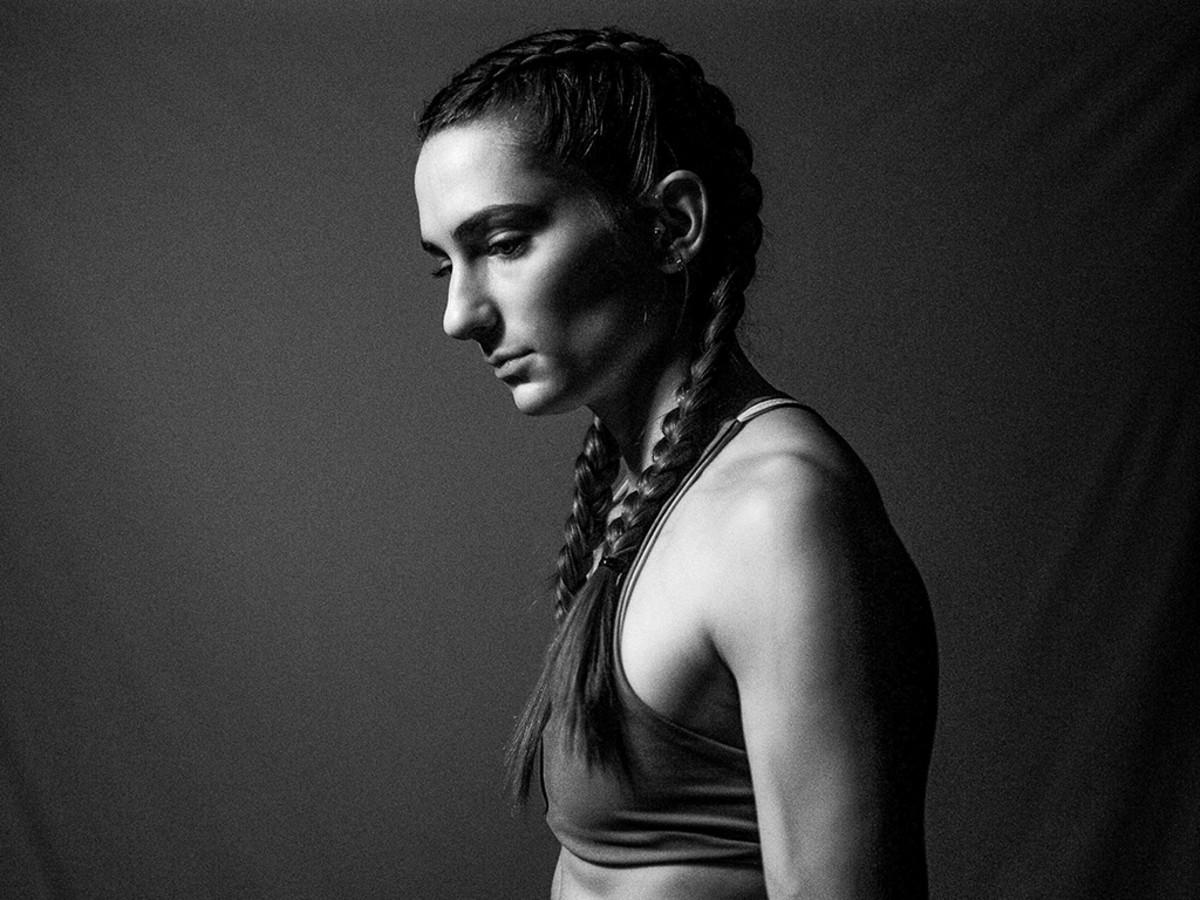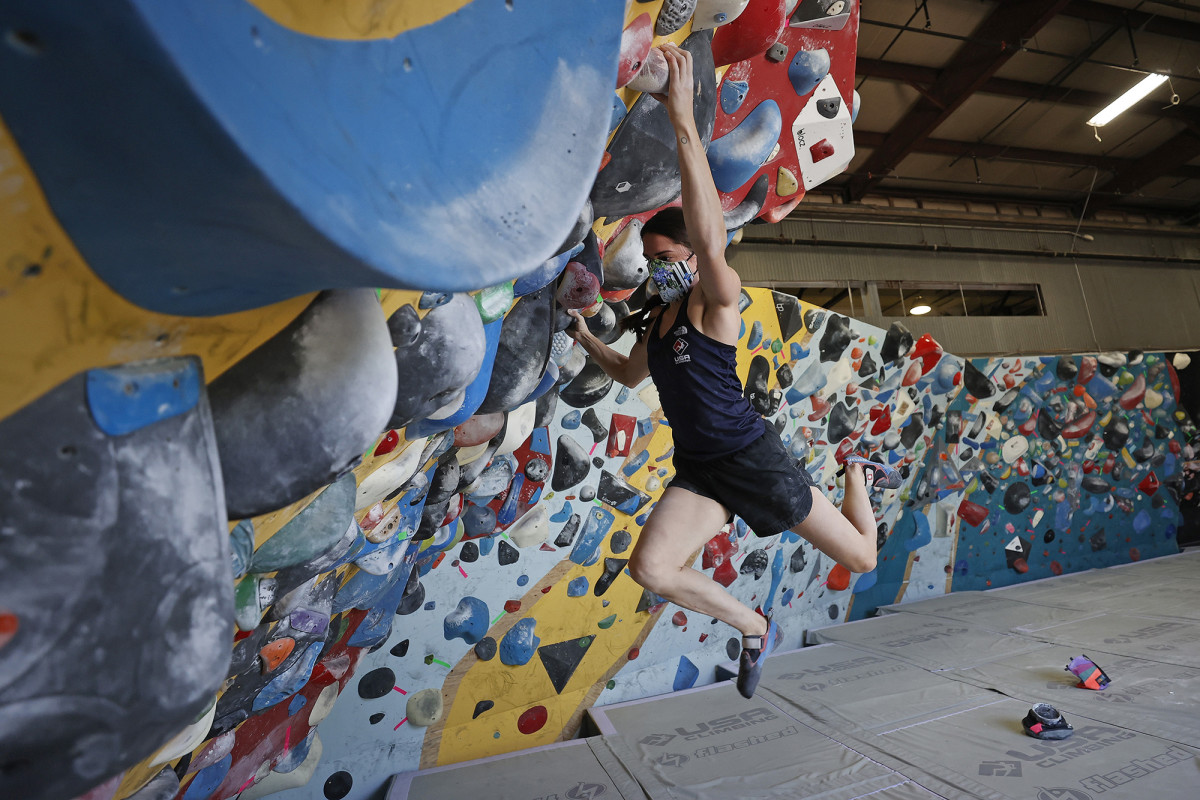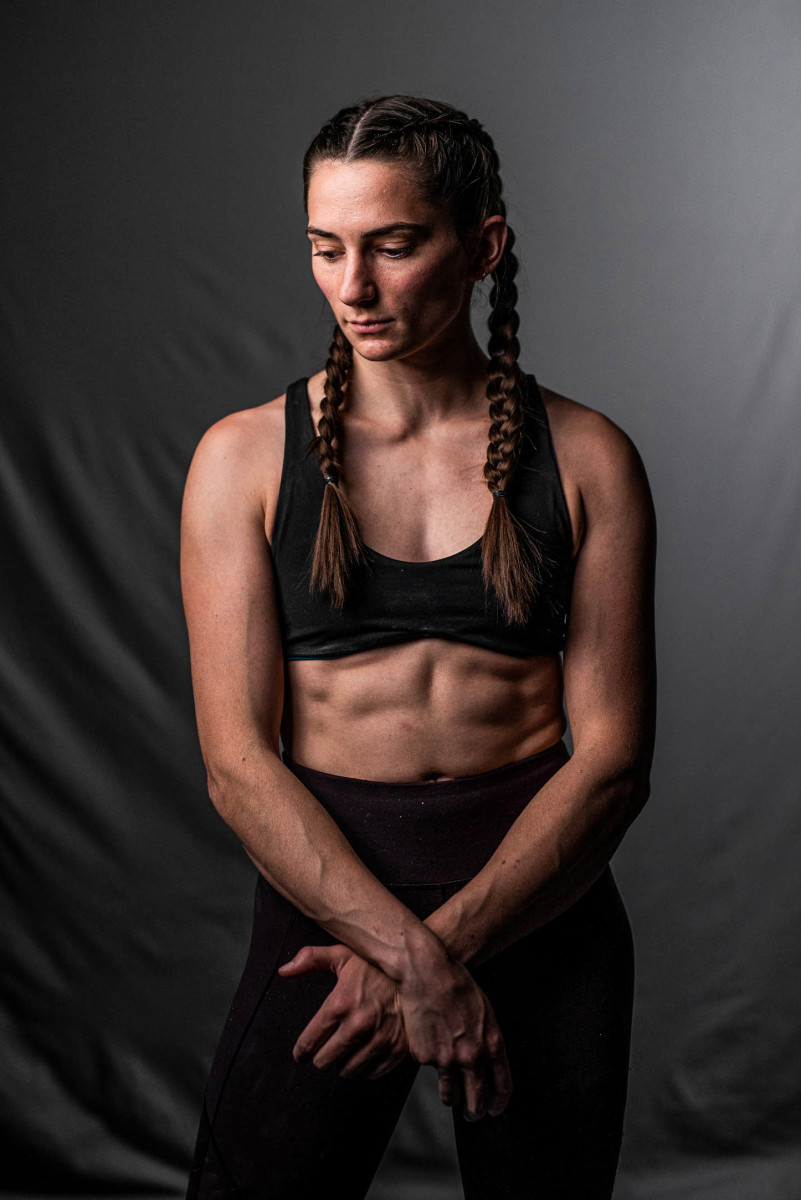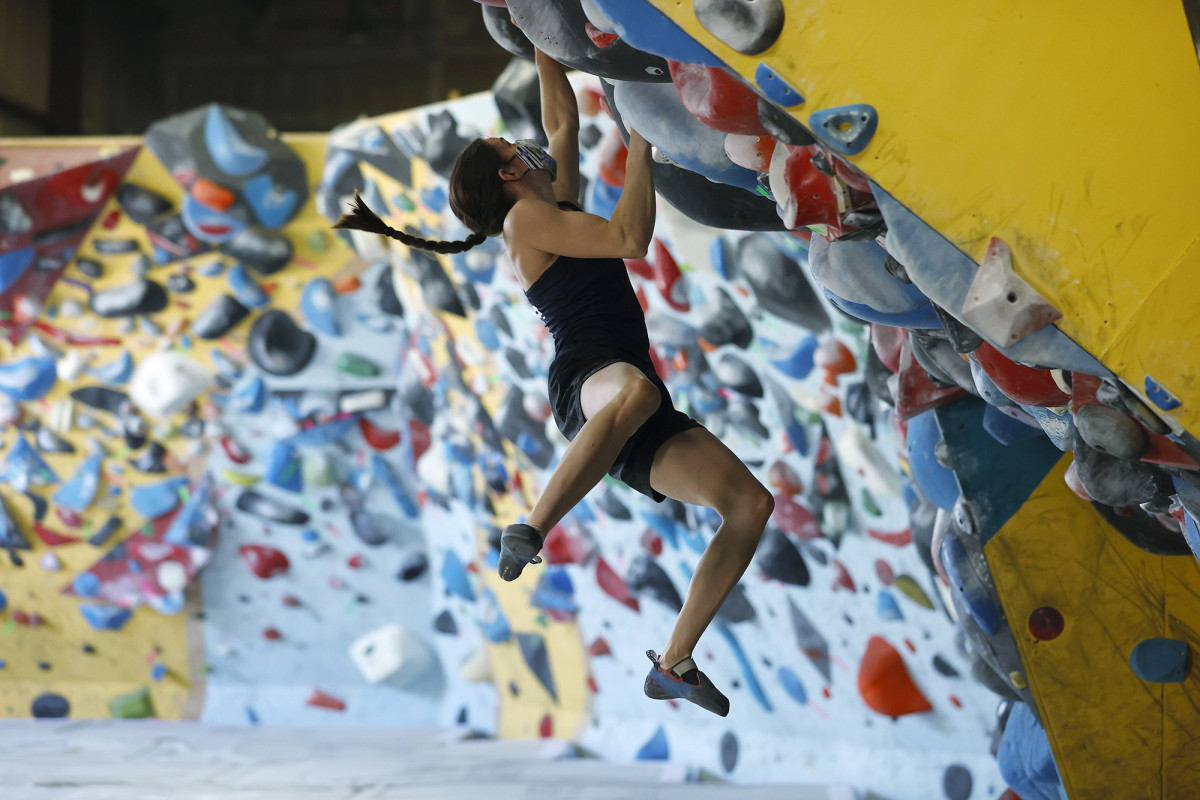Kyra Condie Won't Let Back Surgery Derail her Climbing Dreams
There is a version of the Kyra Condie narrative that reads a bit like a superhero origin story.
First, you have a baby who climbed—on her family, on furniture, everything. Her parents had to take her out of her crib early because she wouldn’t stop climbing out of it. A bit later, in one of her more memorable climbs as a toddler, she ended up on top of the refrigerator. So when 10-year-old Kyra learned that climbing could be a sport, rather than just a free-range activity, it felt like destiny.
But it became clear that something was wrong shortly after she joined her first climbing team. Her back hurt. Some positions on the wall seemed impossible for her. And a visit to the doctor showed that it was more serious than anyone had guessed: Her spine had a 70-degree curve, like an S, due to severe idiopathic scoliosis that would require surgery. The first doctor who examined her did not leave any room to negotiate on what this meant for her future: No climbing ever again.

She begged her parents to seek a different medical team, and eventually, they found second and third opinions with a different vision: Her back would not be able to bend or twist at all from the bottom of her neck to the base of her rib cage, but if she wanted, she could still climb.
In 2010, a few months before she turned 14, Condie underwent surgery to fuse 10 vertebrae. She was able to start climbing again later that year—and she quickly became better than she’d ever shown the potential to be before the procedure. As she advanced, she outgrew the coaching that was available by her home in Shoreview, Minn., so she coached herself with hours of solo sessions.
At 23, she became one of the first U.S. women to qualify for climbing as an Olympic sport.
A child whose abilities were obvious as an infant grew up to be marked by a physical difference that she embraced to become stronger than ever before: Greek myth, superhero origin story, shades of all of that.
But, of course, the full version is a little more complicated.
Her surgery was indeed an inflection point in her climbing career—the months that she had to spend without the sport showed her how much she loved it and didn’t want to live without it. But her intense pushback on the idea that she would never climb again and her dedication to the craft after she was able to return were shaped less by the situation itself and more just ... who she already was.
“I was a pretty stubborn kid anyway,” she says, laughing. “As soon as they said something I didn’t like, I was just, nope, nope, this isn’t the one, I just stopped listening.”
And her striking ascent through her teen years felt much more gradual than it might seem looking back.
“She wasn’t a standout youth star,” says her mom, Cathy. “There are some kids that are, but hers was like this slow, steady, continually improving progress. It kind of snuck up on us.” (Asked whether there was a moment when her talent crystallized, her father, Tom, jokes, “Probably when she qualified for the Olympics?”)
But as Condie prepares for Tokyo in 2021—where sport climbing will make its debut in the Olympics—you could be forgiven for holding on to the superhero story line. After all, just watch her climb, and it's clear how it seems to fit.

***
Condie’s style was described once by a commentator as “reckless abandon”—somewhat frenetic, systematically intense, with daring moves that could look impossible until she actually pulled them off.
She never consciously tried to affect such a technique. But after years of climbing uncoached, copying what she admired and figuring out how to make it work for her, it was just how she grew.
“I think what sets me apart in my climbing style is actually the lack of coaching,” says Condie, now 24. “The way I really learned to climb was by watching all the older guys at the gym. I was 12 or 13, and I would try to mimic the style that these twentysomething guys were doing. So I think my style’s really kind of burly and dynamic, for sure—a little bit frantic, but not always in a bad way.”
This took her far. But after she graduated from the University of Minnesota in 2018, as she looked at trying to qualify for the Olympics in 2020, she figured that she might have to leave her home state to pursue serious coaching for the first time. As her climbing had gotten more advanced, it had become trickier to label and fix her weaknesses on her own, and it didn’t help that the more difficult climbs were often more position-dependent, which entailed figuring out workarounds to accommodate her back. And she didn’t have access to a speed climbing wall in Minnesota, which represented an entire discipline to master for the Olympics. So in November 2019, she left her hometown for Salt Lake City, home to the headquarters of USA Climbing.
The transition required an adjustment. She’d been climbing on her own for so long—and retained enough of that childhood stubbornness—that her new environment, for all its benefits, was difficult to assimilate to. “I don’t think I’m the easiest to coach,” she admits. “It’s something I really put a concerted effort into this year, because that’s never been something I’ve been great at. I’ve always been really good at solo sessions, but now, I almost always have a training crew, which is crazy to me—like, I’d basically always climbed alone for the last four years in Minnesota.”
Her coach, at least, thinks that her concerted effort there has paid off.

“If you asked me a year ago, I would have said she was challenging,” USA Climbing head coach Josh Larson says with a laugh. “But our relationship has really grown, and we’ve been able to understand each other and respect each other in all different ways.”
Condie qualified for the Olympics shortly after her move last winter—by making the finals at an international tournament in France—and she prepared for what she expected to be an intense few months of training leading up to Tokyo. The coronavirus, of course, suspended that plan. But now that she’s able to practice more or less as usual again, the postponement has revealed itself to be a potentially important opportunity: an extra year to train on a flexible schedule, without any international tournaments on the calendar, and her qualification locked up.
That extra time is useful partially because the Olympic climbing format is unique. It will combine three disciplines for one set of medals: speed (racing another climber side-by-side), lead (going as high as possible within six minutes) and bouldering (completing as many routes as possible on one wall in four minutes). Generally, those formats are kept separate, and the IOC has already voted to change it for Paris in 2024, with two sets of medals instead of one. For now, however, climbers have to figure out how to balance their strengths for all three at once.
Trying to succeed in all the disciplines requires a balance of speed, power and endurance. “It’s really difficult, because fundamentally, those are just usually antonyms,” Condie says. She’s now training five to six days a week, with frequent double sessions, and has tried to use the extended time between international competitions to experiment with different routines and structures.
“I think for her, it’s been a big thing to go, O.K., this is going to be hard for me, and I’m going to get through it and force myself to work on it,” Larson says. “She’s just putting herself in uncomfortable positions more.”
***
Her move to Salt Lake City has also allowed her to climb regularly with other women, a first for Condie. After honing her style by watching men, and then spending years on her own, it’s been a welcome change. Canadian climber Allison Vest is now not only a training partner but also her best friend and roommate.
“I’ve never gotten to train around girls a lot,” Condie says. “Especially other strong girls. So having somebody there like her who can push me to be better at basically everything is irreplaceable.”
Vest, like Condie, was largely self-trained before she moved to Utah; they're similarly intense, which is part of what led them to first become friendly with each other at competitions years ago. In that way, Vest sees Condie’s climbing style as a reflection of her personality.

“She definitely moves quickly, that’s for sure,” Vest says. “But for me, it’s less of a reckless, chaotic sense of things, and it’s more just that she moves really confidently and with authority—like, if she’s going for a hold, she’s going for 100%. It’s not going to be tentative and it’s not going to be super-controlled a lot of the time, but she’s giving it 100% of what she has 100% of the time, and a lot of the time, that pays off for her.”
There, again, is an echo of that superhero origin story. Which is fitting, her parents say, because her approach then is the approach she’s had for everything since.
“I don’t think it really ever registered to her that maybe she wouldn’t come out the other side,” says Cathy. “She looks at what she needs to do, and she does it, and works really hard at it. She’s just like that.”
For more from stories on the most powerful, most influential and most outstanding women in sports right now, check out Sports Illustrated's series The Unrelenting.
